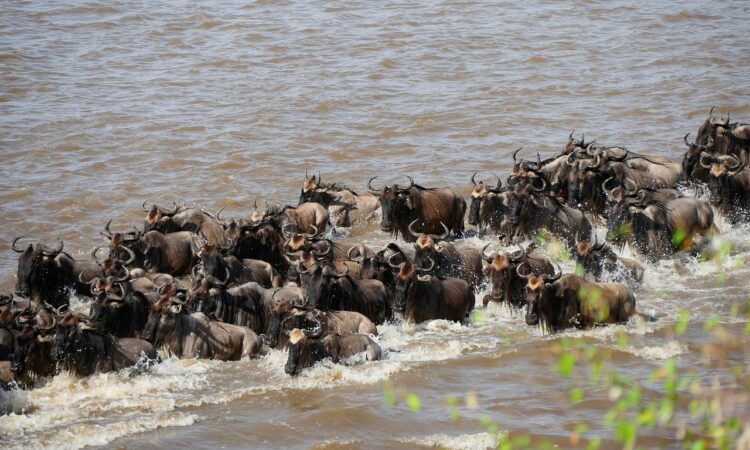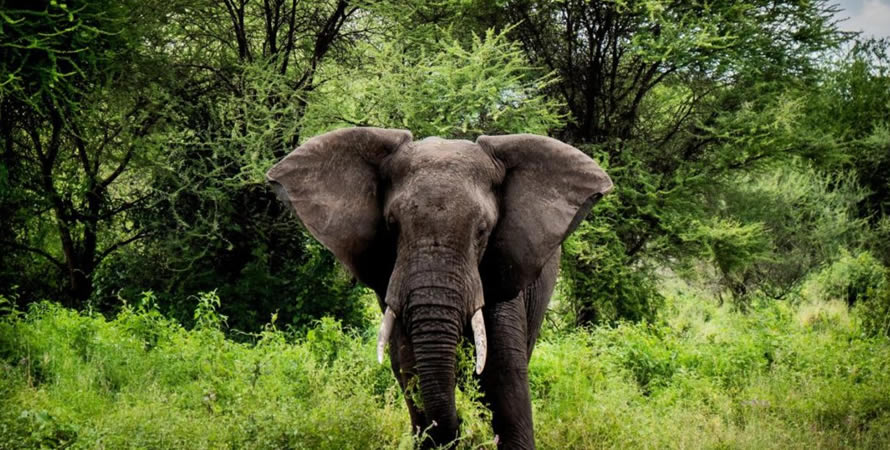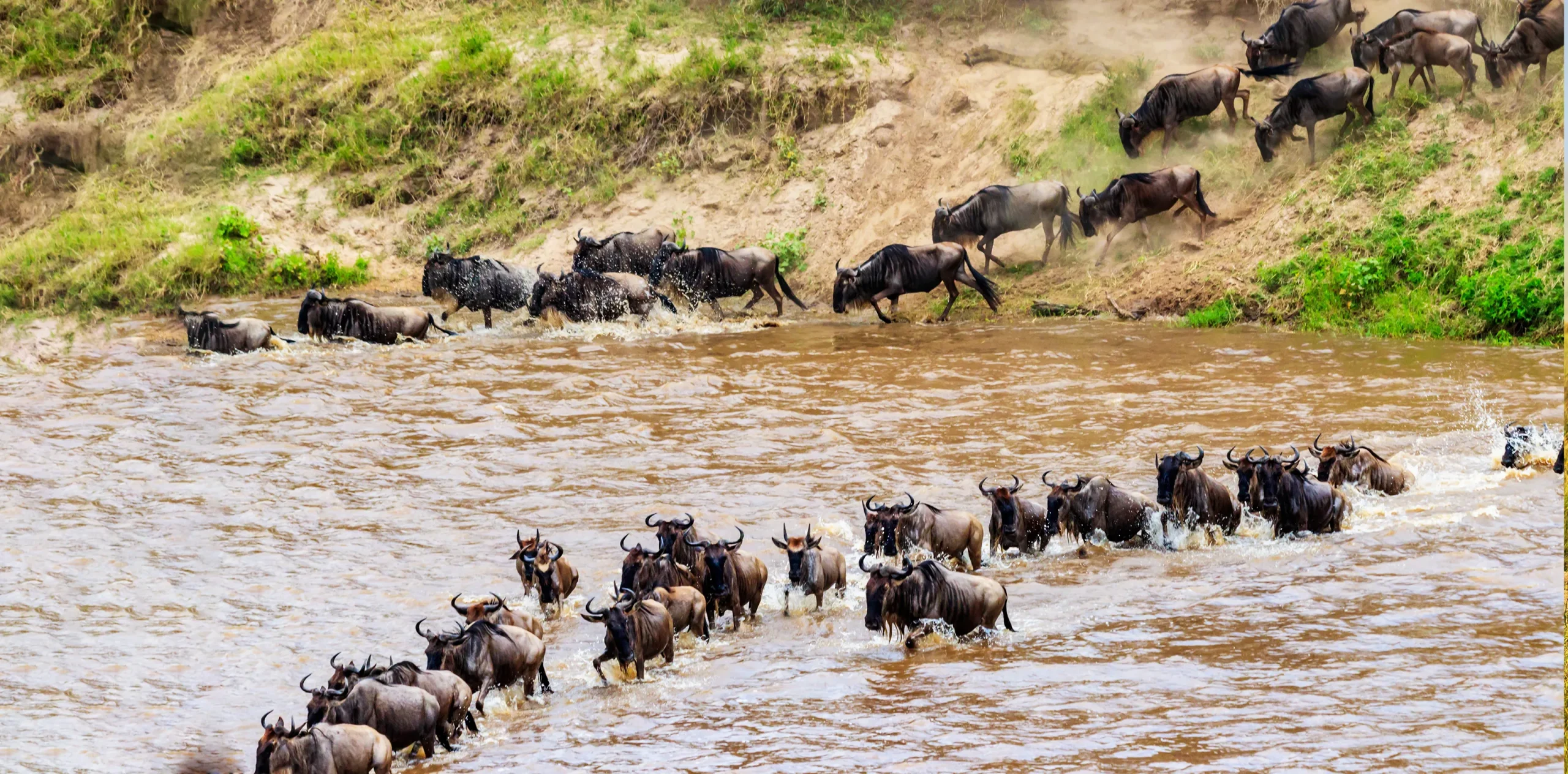When is the right time to go to the Serengeti?

Serengeti is one of the 22 national parks in Tanzania. Out of these parks, Serengeti shines worldwide due to its spectacular wildebeest migration, also the Great Migration, the Big Five, large predator population, and its very own ‘endless’ plains. You can come here to appreciate nature since this oldest ecosystem and has been intact for a million years.
Most of our clients ask if they’re planning their Serengeti safari at the right time. Since there’s much to see in this park, the ‘right time’ depends on what you want to experience. In this guide, we’ll describe when it’s the perfect time to be in the Serengeti depending on your interests. Should you find your question unanswered, please call us.
Serengeti is a year-round destination. Any time you step foot into this wildlife-rich park, you’ll leave with something unforgettable in your mind. But if you have very specific experience, we’ll break it down for you.
The best time for wildlife viewing.
The dry season (June to October) offers excellent wildlife experiences because:
- There’s less rainfall, which permits easy navigation through the rough trails within the park. There’s also no interruption during game drives, making it smoother.
- The vegetation also thins out and makes game viewing much easier. You can easily spot wildlife as you point your eye through the short-grass plains.
- The scarcity of water draws animals to a few water sources within the park. You can easily find wildlife near rivers like the Seronera, Grumeti, Mbalageti, and Mara.
- There are fewer mosquitoes and tsetse flies. These insects usually breed in stagnant water, which is rare during this season. So, you won’t get frequent bites from them, though it’s important to protect yourself.
The dry season usually comes with several challenges, including:
- There’s high traffic, especially in the central part of the park.
- The prices in lodges and camps usually skyrocket, making your trip costly.
A pro tip
For anyone seeking to tick off the Big Five, June to October is a great time. The Big Five – lion, leopard, elephant, buffalo, and black rhino – are a common sighting in the central part of the park. This part, however, offers year-round encounters with the Big Five and many other animals. So, if your trip doesn’t fall in this season, or you want to avoid the crowd, set off for Central Serengeti, also called Seronera.
Besides the most sought-after Big Five, Serengeti harbors the largest population of predators. The park holds one of the largest lion populations and an incredible count of leopards and cheetahs. You can also find other predators like hyenas, jackals, bat-eared foxes, mongooses, and more.

The best time for trekking the Great Migration.
Each year, the Serengeti sees a series of wildebeest herds moving from the south to the north in their search for greener grazing grounds. Dubbed as the Great Migration, this event features over 2 million wildebeest, zebra, and gazelle. Many safari-goers wish to witness this giant mammal migration on Earth. However, planning smart is very important to avoid missing out because the animals are unpredictable. Here’s an estimated timeline.
December to March – Southern Serengeti and Ndutu
The wildebeest herds in the short-grass plains of Ndutu and southern Serengeti. They give birth to about 500,000 calves within two months, January and February. Sometimes, the plains may see up to 8,000 newborns being born in a day.
Do you want to see newborns stepping on the plains for their first time? Then, plan your safari for this time, head to the park’s south, and enjoy. You will see large predators like lions, leopards, cheetahs, and hyenas in action as they take advantage of weak adults and calves. There are other big games to see, like buffalo, elephant, giraffe, and impala.
April to June – Central Serengeti and Western Serengeti
The herd starts to leave the southern plains when rainfall declines in April. They head northwards through the Moru Kopjes and settle in the Seronera Valley. This time, you can see aggressive bulls fighting for females because this is the rutting season.
By June, they move to the Western Corridor, where they cross the Grumeti River. Depending on the season, animals may stay here until July, then move northwards to face the Mara.
July to September – Mara River

Grumeti crossings may continue until the middle of July. Between August and September, they face the giant, crocodile-infested Mara River. Most nature lovers crave these iconic crossings. It’s a complete drama. As the animals leap into the waters, hungry crocodiles take their share from the herd. As this happens, lions also hunt on the banks to get their prey. There’s so much action here.
A pro tip
The seasonality changes of the wildebeest make it a true drama. We highly encourage you to keep in touch with us for recent updates on the wildebeest migration.
The bottom line.
We’ve guided thousands of visitors to witness the Great Migration. Of course, they witnessed even those rare moments because with them were experienced guides and animal trackers. So, we are here to help you watch this spectacular event. Book a safari with us.


